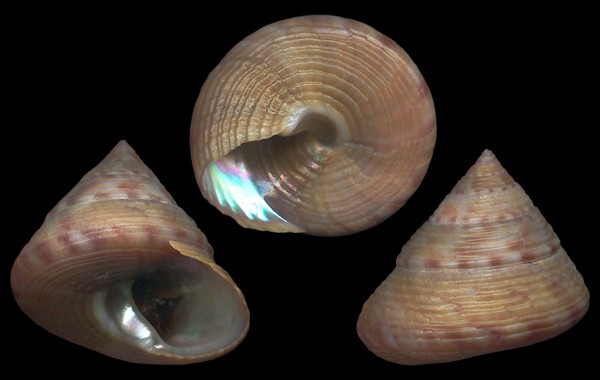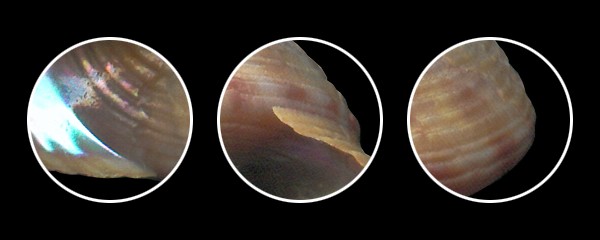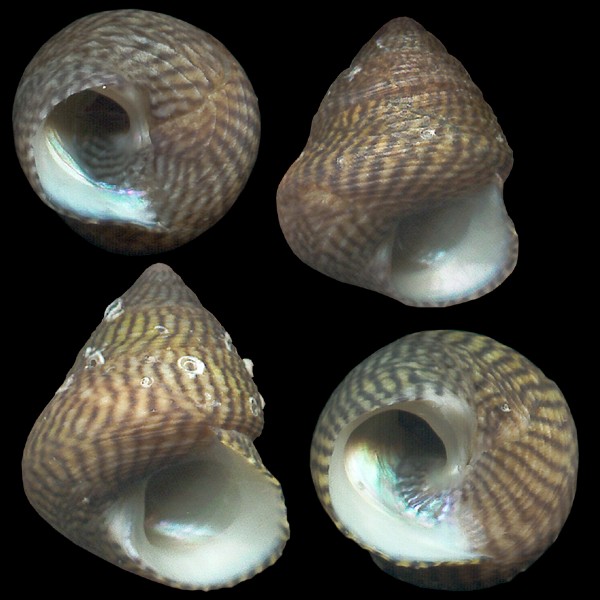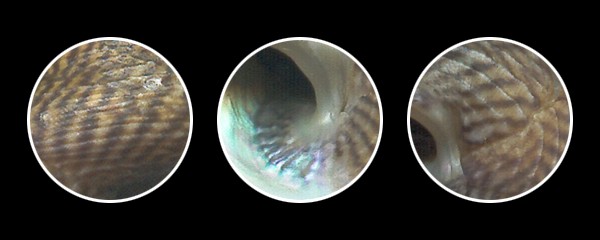Gibbula cineraria (Linnæus, 1758) 13-14mm. On stones, in the water.
Always the form "elatior". Variations affect sculpture (spiral ribs less or more widely spaced),
height, shape, and pattern. For example, there is a variant named "variegata" Jeffreys 1865,
in which the sutural band is crowned, like in many C. zizyphinum , by an alternance of
dark and light coloured rectangular marks. |
Linnæus placed this species in the genus Trochus.
Cinerarius. 512. T. testa oblique umbilicata ovata, anfractibus rotundatis. Habitat in M. Mediterraneo.
testa cinerea fasciis obliquis pallidis. (Syst. Nat. X / Vermes / Testacea p.758).
This kind of description covers many species of Gibbulas, like pennanti, philberti, rackettii,
umbilicalis, and even some varia... |



